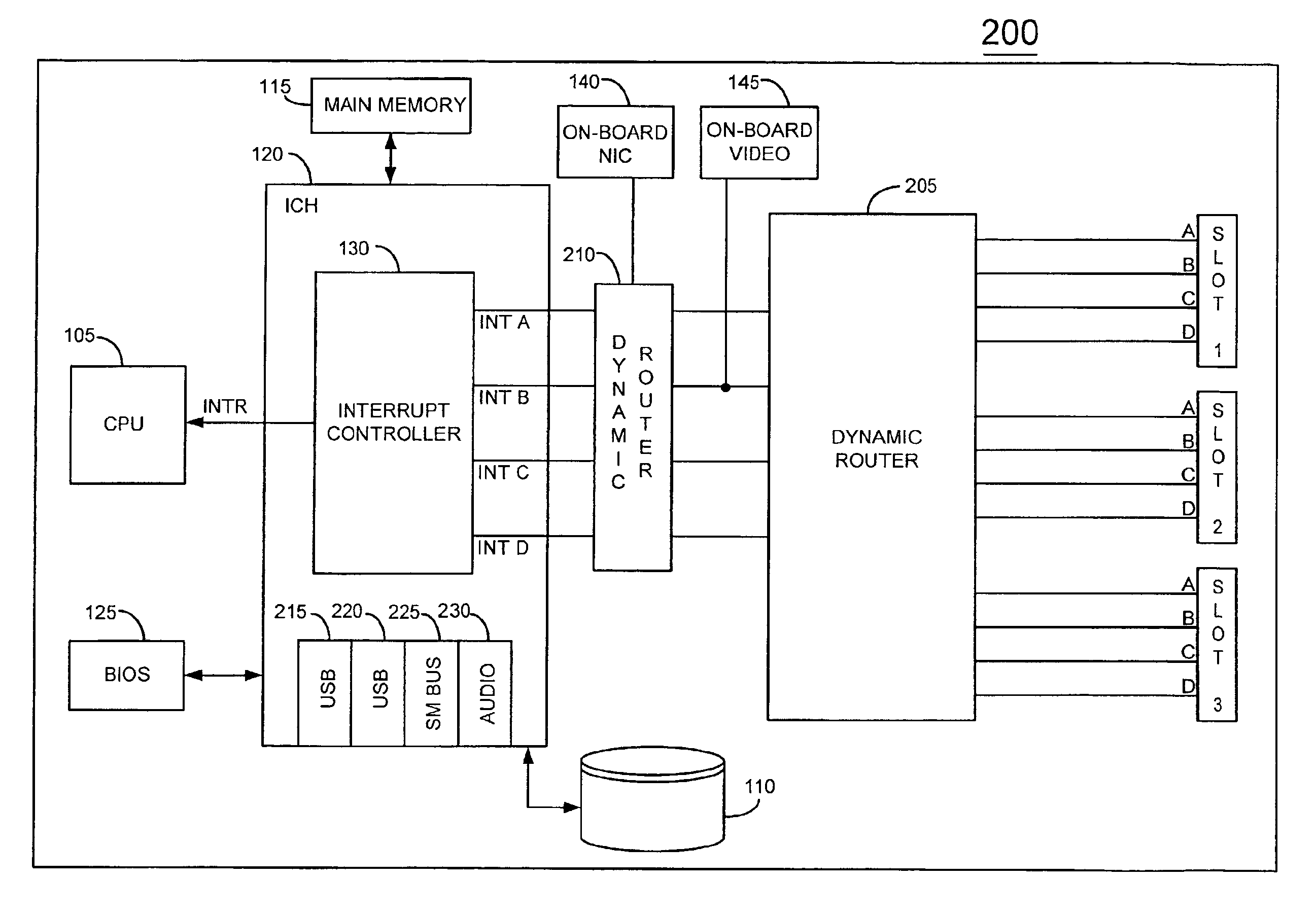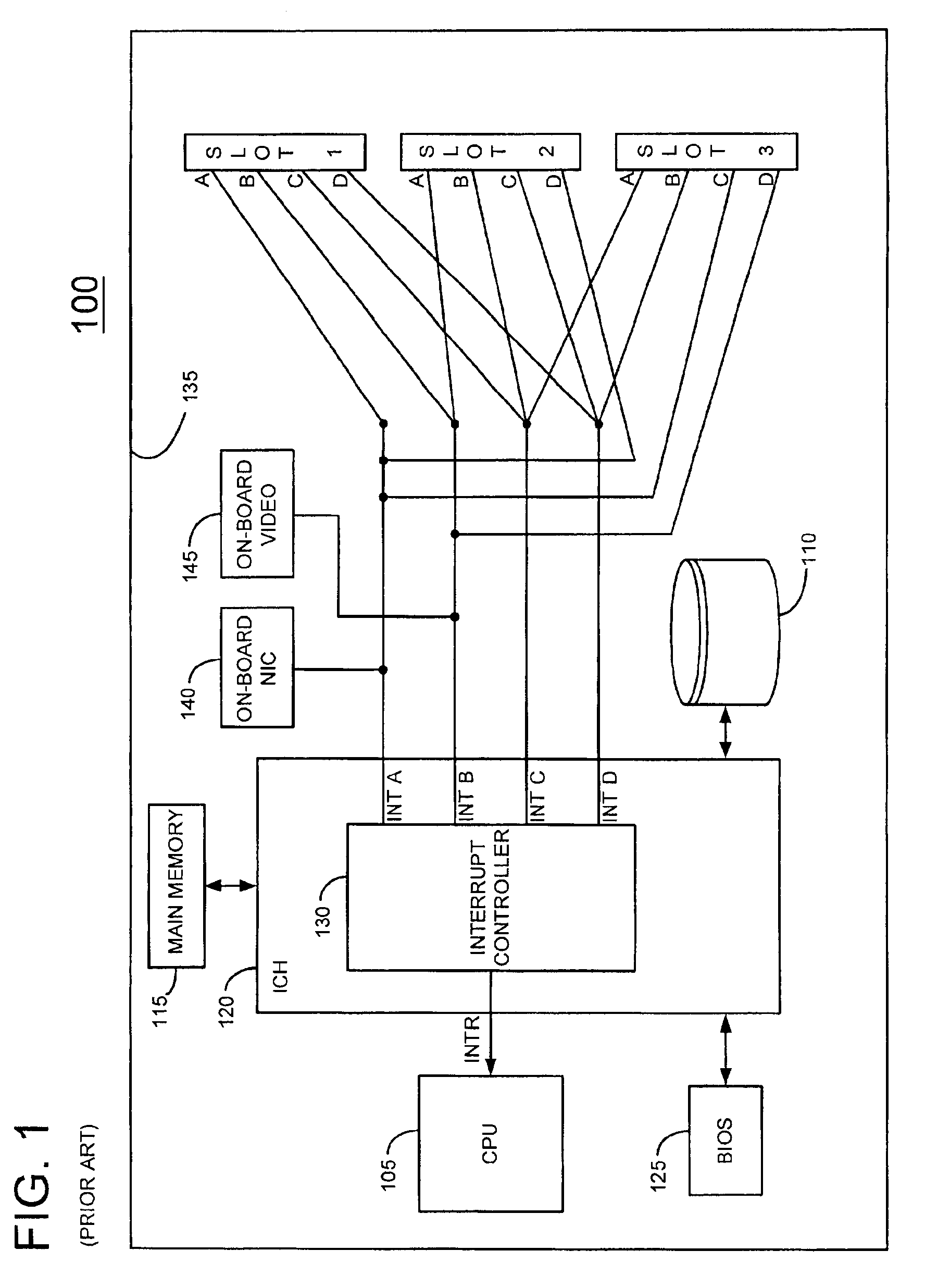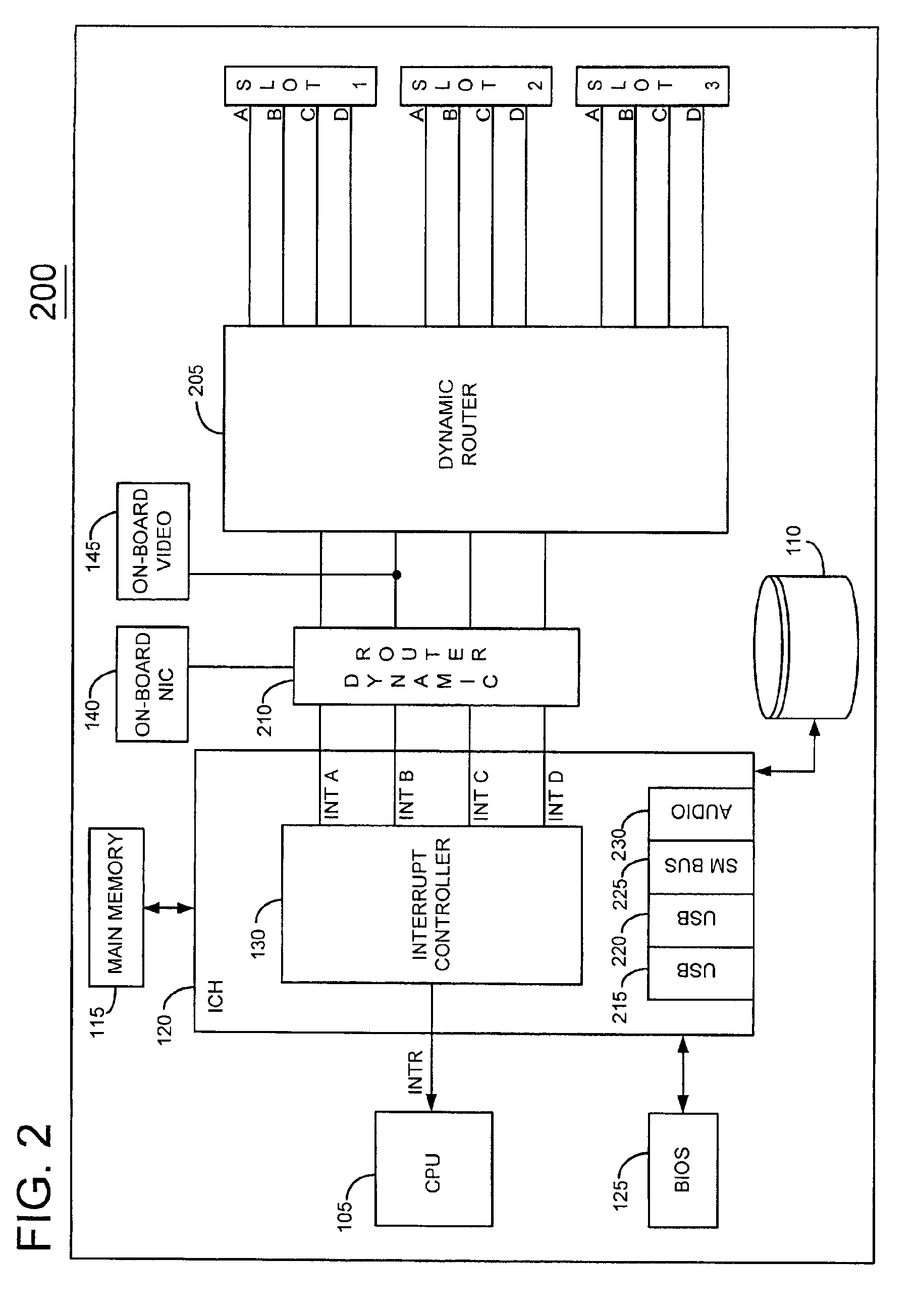Information handling system with dynamic interrupt allocation apparatus and methodology
a dynamic allocation and information processing technology, applied in the field of information handling systems, can solve the problems of large interrupt burden, inefficient interrupt distribution, and significant delay, and achieve the effect of more balanced interrupt distribution and uniform distribution of interrupts
- Summary
- Abstract
- Description
- Claims
- Application Information
AI Technical Summary
Benefits of technology
Problems solved by technology
Method used
Image
Examples
Embodiment Construction
FIG. 1 depicts a conventional information handling system 100 such as a computer system, for example. An information handling system is defined as an instrumentality or aggregate of instrumentalities primarily designed to compute, classify, process, transmit, receive, retrieve, originate, switch, store, display, manifest, detect, record, reproduce, handle, or utilize any form of information, intelligence or data for business, scientific, control or other purposes.
System 100 includes a processor 105 (CPU) for executing programs which are typically stored in a storage device 110. A main memory 115 facilitates execution of programs by processor 100 by providing temporary storage for instructions and data. Processor 105, storage device 110 and main memory 115 are coupled together by a conventional I / O controller hub (ICH) 120 as shown. A Basic Input Output System (BIOS) Flash memory 125 stores firmware which provides an interface between the operating system and hardware devices. ICH 12...
PUM
 Login to View More
Login to View More Abstract
Description
Claims
Application Information
 Login to View More
Login to View More - R&D
- Intellectual Property
- Life Sciences
- Materials
- Tech Scout
- Unparalleled Data Quality
- Higher Quality Content
- 60% Fewer Hallucinations
Browse by: Latest US Patents, China's latest patents, Technical Efficacy Thesaurus, Application Domain, Technology Topic, Popular Technical Reports.
© 2025 PatSnap. All rights reserved.Legal|Privacy policy|Modern Slavery Act Transparency Statement|Sitemap|About US| Contact US: help@patsnap.com



